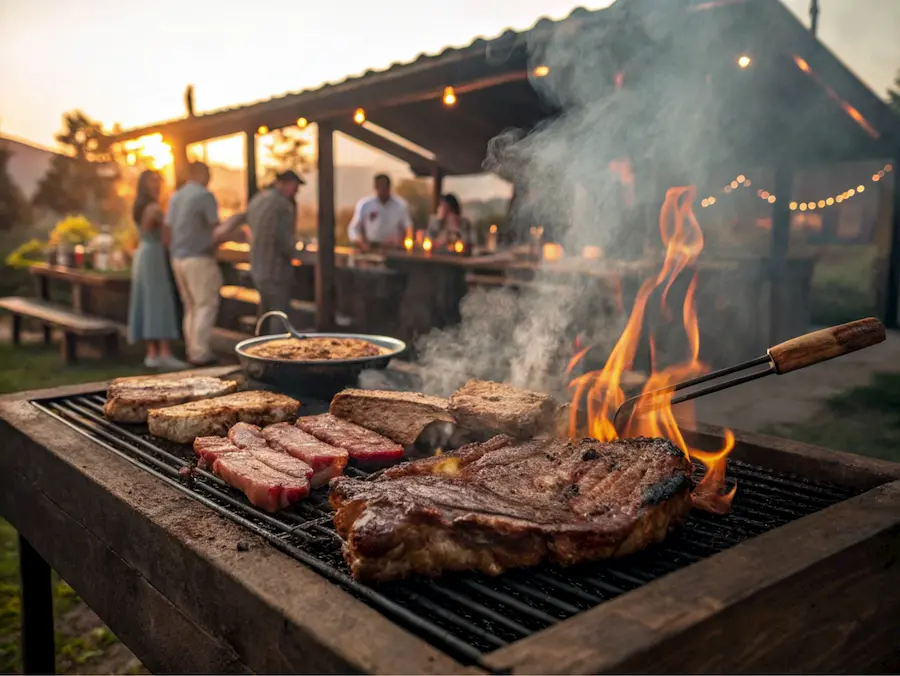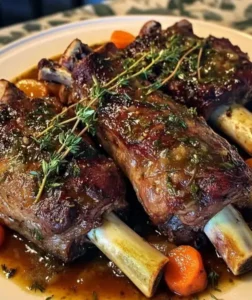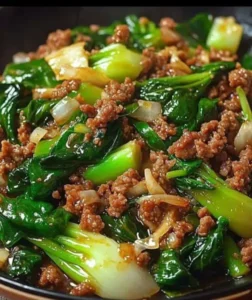Asado is a traditional South American barbecue, particularly popular in Argentina, Uruguay, and Chile, but also enjoyed in other countries like Paraguay and southern Brazil. It refers not only to the method of cooking meat but also to a social event centered around the grilling process. Here’s everything you need to know about Asado:
What is Asado?
At its core, Asado is a method of grilling meat, typically over an open flame or charcoal. It’s more than just cooking—it’s a social occasion where family and friends gather around the grill, enjoy good company, and share a meal. The term Asado can also refer to the type of meat being cooked, as well as the whole social event.
Traditional Asado Features:
- The Grill (Parrilla):
- Parrilla is the term for the grill, which can be either a simple open flame, a clay oven, or a more elaborate metal grate (often adjustable) over the fire.
- In Argentina, you’ll often see a « asador, » a specialized person who manages the grill and cooking process.
- Meat Selection:
- Beef is the star of the asado, and cuts of meat often include:
- Asado de tira (short ribs)
- Vacio (flank steak)
- Costillas (ribs)
- Entraña (skirt steak)
- Chorizo (sausage)
- Morcilla (blood sausage)
- Picanha (a Brazilian favorite, a cut from the top of the rump)
- It’s not just beef, though—pork, lamb, and chicken are also commonly included, depending on the region.
- Beef is the star of the asado, and cuts of meat often include:
- Cooking Process:
- The meat is often seasoned simply with salt, but sometimes a mixture of chimichurri (a parsley-based sauce) is used for marinating or serving alongside.
- The cooking process is slow and low, often taking hours. Meat is grilled over wood or charcoal, with the flames kept low to avoid charring the meat. The focus is on cooking it slowly to bring out the best flavors.
- Indirect heat is key, so the meat is typically placed far enough from the fire to cook slowly but steadily.
- Accompaniments:
- Chimichurri: This tangy, herby sauce is a must for Asado. It’s made from parsley, garlic, vinegar, olive oil, and spices like oregano and red pepper flakes. It’s used both as a marinade and a condiment.
- Vegetables: Sometimes, vegetables like peppers, onions, and potatoes are grilled alongside the meat.
- Empanadas: In many regions, asado is accompanied by these savory pastries filled with meat, cheese, or vegetables.
- Salads and Bread: Fresh salads, such as those made with tomatoes, lettuce, and onions, and crusty bread are often served.
- The Asado Event:
- An asado is a communal event. It can last for several hours and often extends into the evening. People drink wine (especially Malbec, in Argentina) or beer, socialize, and enjoy the cooking process.
- Maté (a traditional herbal tea) is another drink commonly consumed during an asado, especially in Argentina and Uruguay.
- It’s a slow process: Unlike quick grilling methods, asado is leisurely, allowing plenty of time for conversation and enjoyment.
Regional Variations of Asado:
- Argentina: Asado is a national pastime in Argentina. While beef is the highlight, regional variations exist. For instance, in the Patagonia region, lamb is more commonly used, and in Córdoba, pork sausages (like morcilla) might take center stage.
- Uruguay: Very similar to Argentina, but with a stronger emphasis on sausages, such as chorizo and morcilla. Uruguayans also enjoy a slightly smokier flavor from their grilling methods.
- Chile: In Chile, asado is sometimes done over a pit or using wood smoke, and they often add empanadas filled with cheese, seafood, or other ingredients to the spread.
- Brazil (Churrasco): While technically a different tradition (called Churrasco in Brazil), it shares many similarities with asado, particularly with the use of skewers (known as espeto) and cuts like picanha. The method involves grilling meat over open flames, often with coarse salt.
Common Asado Dishes:
- Asado de Tira: Short ribs cut across the bone, one of the most iconic cuts in Argentina.
- Morcilla (Blood Sausage): Grilled blood sausage, often served with the meat.
- Chorizo (Sausages): Typically made of pork, often served as an appetizer at the beginning of the meal.
- Provoleta: A grilled cheese (similar to provolone), often cooked directly on the grill until it forms a crispy exterior and a melty interior. It’s usually served with oregano and chili flakes.
Tips for Enjoying or Making Asado:
- Patience is key: The best asado isn’t rushed. It’s cooked slowly and carefully, sometimes taking hours. Patience is rewarded with tender, flavorful meat.
- Social aspect: It’s all about the experience. Asado isn’t just about food; it’s a chance to bond with others, enjoy the moment, and share something meaningful.
- Good quality meat: Choose high-quality cuts, preferably sourced locally or from trusted butchers, for the best flavor.
Final Thoughts:
Asado is more than just a meal—it’s a tradition and a celebration of food, family, and friends. The slow cooking process and communal atmosphere make it a special experience, deeply ingrained in the culture of several South American countries. Whether you’re hosting your own or simply enjoying one with friends, Asado brings people together in a way few other meals do.





